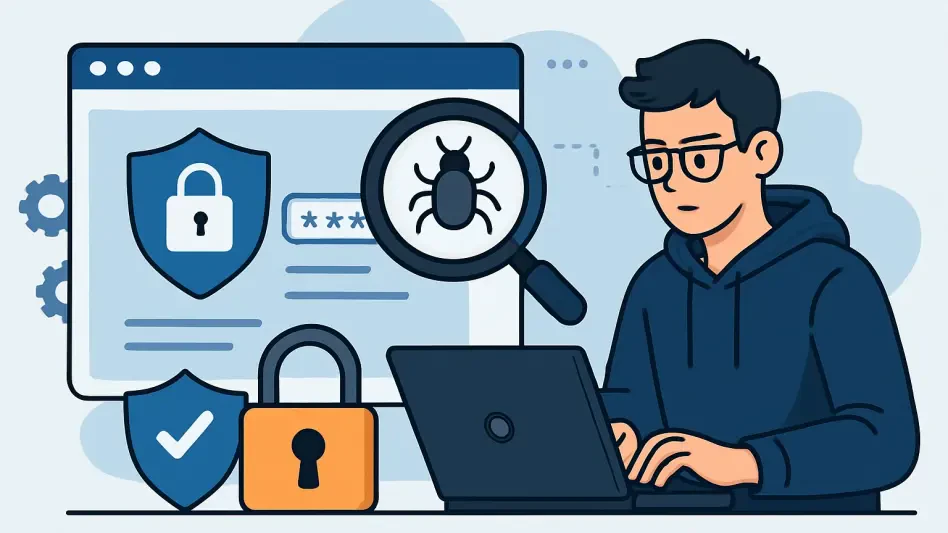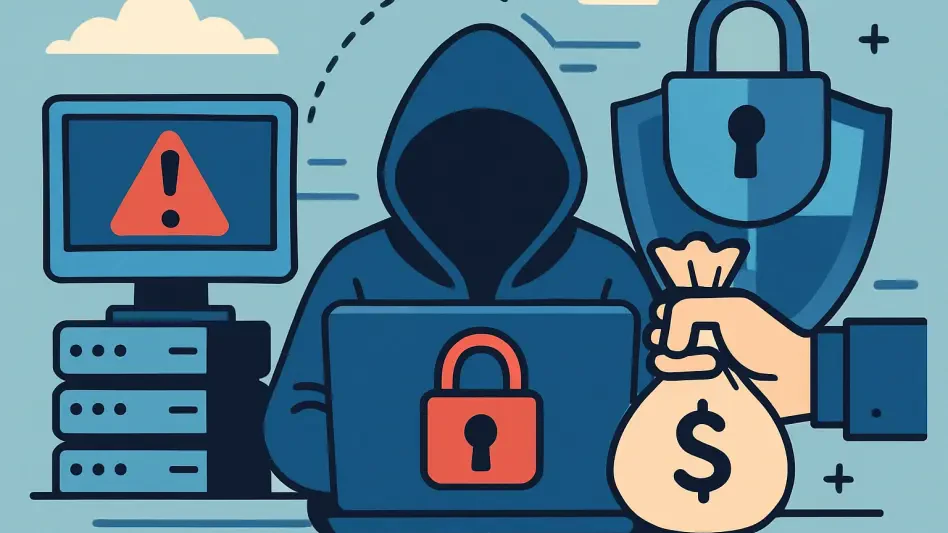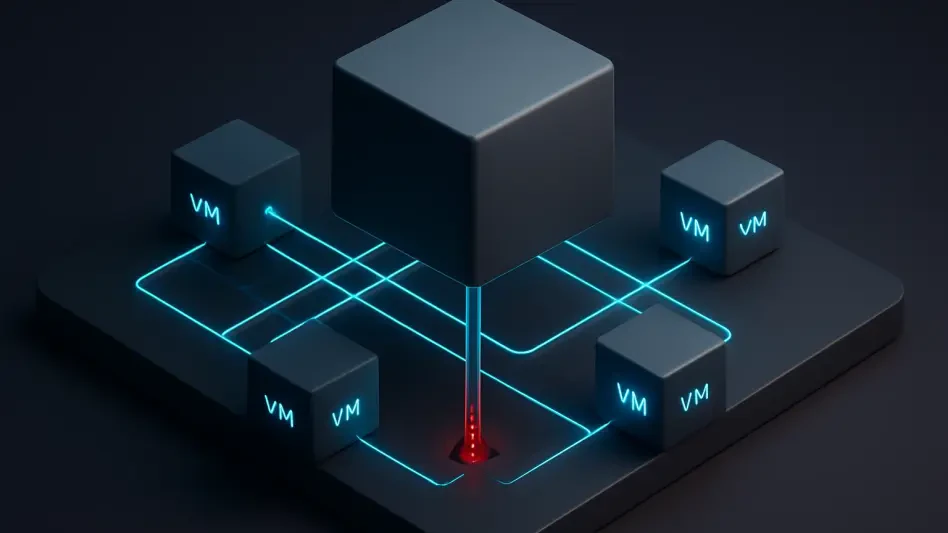In the rapidly evolving digital landscape of today, web applications have become the cornerstone of business operations, powering everything from customer interactions to internal workflows, while their reliance has made them prime targets for cybercriminals deploying increasingly sophisticated methods to exploit vulnerabilities. The urgency to secure these platforms has reached a critical peak, with penetration testing emerging as an essential defense mechanism to identify and mitigate risks before they can be weaponized. This specialized practice goes beyond surface-level checks, delving into the intricate layers of applications to uncover hidden flaws that could compromise entire systems.
This exploration highlights the top firms excelling in web application penetration testing, meticulously evaluated for their expertise, innovative approaches, and ability to deliver robust security solutions. These companies represent the forefront of cybersecurity, offering services that cater to a wide range of organizational needs, from sprawling enterprises to agile startups. Their role in safeguarding digital assets is more vital than ever as attack vectors grow in complexity, targeting not just code but also business logic and APIs with precision. By blending human insight with cutting-edge technology, these industry leaders provide a comprehensive shield against threats, ensuring businesses can operate with confidence in an era of relentless cyber risks.
The Critical Role of Web App Security Today
Escalating Threats in the Digital Arena
The cyber landscape is more treacherous than ever, with attackers homing in on web applications as gateways to sensitive data and critical systems. Sophisticated techniques, such as API exploitation and multi-step attacks, have become commonplace, challenging businesses to stay ahead of threats that evolve daily. Penetration testing stands as a proactive measure, simulating real-world attacks to expose vulnerabilities before malicious actors can exploit them. This process is not merely a technical exercise but a strategic necessity, as a single breach can disrupt operations, drain resources, and erode customer trust in an instant. The top firms in this field understand the stakes, delivering assessments that address both common weaknesses and obscure flaws that automated tools often overlook.
Businesses face a dual challenge: protecting their infrastructure while navigating an environment where attackers leverage advanced tools to bypass traditional defenses. The rise of cloud-based applications and remote work has expanded the attack surface, making comprehensive testing indispensable. Leading companies in this space prioritize a deep understanding of attacker mindsets, employing skilled professionals who think like hackers to uncover risks hidden in complex application architectures. Their work ensures that organizations are not just reacting to breaches but preventing them, maintaining a security posture that aligns with the dynamic nature of today’s digital threats.
Regulatory Demands and Brand Protection
Meeting regulatory standards like PCI DSS and SOC 2 is non-negotiable for many industries, with non-compliance carrying hefty fines and legal repercussions. Penetration testing serves as a critical tool to validate adherence to these frameworks, ensuring that businesses avoid penalties while strengthening their defenses. The top firms excel in aligning their services with these requirements, providing detailed documentation and remediation guidance that streamline audits. Their expertise helps organizations navigate the complex maze of compliance, turning a potential burden into a competitive advantage by demonstrating a commitment to security.
Beyond compliance, the reputational stakes are immense—a data breach can shatter consumer confidence and damage a brand irreparably. Cybersecurity is no longer just an IT concern but a boardroom priority, as the fallout from an incident can affect market position and long-term viability. The leading penetration testing companies recognize this, offering solutions that not only mitigate technical risks but also safeguard public perception. By identifying and addressing vulnerabilities proactively, they empower businesses to maintain trust with stakeholders, ensuring that a strong security posture translates into sustained credibility in a hyper-connected marketplace.
Hallmarks of Elite Penetration Testing Providers
Emphasis on Human-Led Expertise
A defining trait among the premier firms in web app penetration testing is their unwavering focus on human expertise over reliance on automation alone. While tools like Dynamic Application Security Testing (DAST) and Static Application Security Testing (SAST) play a valuable role in spotting routine issues, they often fall short when faced with intricate vulnerabilities such as business logic errors or chained exploits. Skilled testers bring a critical dimension to the process, mimicking the creativity and persistence of real-world attackers to uncover risks that evade algorithmic detection. The top companies integrate this human element as a core pillar, ensuring their assessments are thorough and reflective of actual threat scenarios.
This human-centric approach is particularly vital in an era where cyber adversaries employ nuanced tactics tailored to specific applications. Automated systems, while efficient for broad scans, lack the intuition needed to navigate multi-layered attack paths or interpret contextual flaws. The leading providers address this gap by deploying experienced professionals who dissect applications with a hacker’s mindset, identifying weaknesses that could lead to catastrophic breaches if left unchecked. Their ability to combine manual testing with selective automation results in a balanced methodology, delivering insights that are both comprehensive and precise for organizations seeking robust protection.
Adoption of Advanced Technological Solutions
Innovation is another cornerstone that elevates these firms above the competition, as they harness cutting-edge technologies to enhance their testing capabilities. Artificial Intelligence (AI), proprietary threat intelligence, and hybrid scanning tools are frequently integrated into their workflows, boosting both efficiency and accuracy. By automating repetitive tasks such as initial vulnerability scans, these technologies allow human testers to concentrate on high-impact issues that require critical thinking and strategic analysis. This synergy minimizes false positives, a common frustration in security assessments, ensuring that reports are actionable and relevant.
The use of such advanced tools also enables these companies to keep pace with the rapid evolution of cyber threats, adapting to new attack methodologies as they emerge. For instance, AI-driven analytics can predict potential exploit paths based on historical data, while threat intelligence feeds provide real-time updates on global attack trends. This forward-thinking approach ensures that clients receive assessments grounded in the latest risk landscapes, rather than outdated models. The top firms strike a careful balance, leveraging technology to amplify human expertise rather than replace it, resulting in a testing process that is both scalable and deeply insightful for businesses of all sizes.
Commitment to Actionable and Customized Reporting
The value of penetration testing hinges not just on identifying vulnerabilities but on presenting findings in a way that drives meaningful action. The leading firms distinguish themselves through detailed, tailored reporting that speaks to diverse audiences within an organization, from technical teams to executive leadership. Their reports prioritize risks based on severity and potential impact, offering clear remediation steps that align with business objectives. This ensures that security efforts are focused where they matter most, avoiding wasted resources on low-priority issues.
Moreover, these companies recognize that every organization has unique needs and constraints, customizing their deliverables to match specific contexts. For technical staff, reports might include granular details on exploit methods and code-level fixes, while executives receive high-level summaries linking vulnerabilities to business risks. This dual-focus approach bridges communication gaps, fostering collaboration across departments to address security challenges effectively. By transforming complex findings into practical roadmaps, the top providers empower clients to strengthen their defenses systematically, ensuring that insights translate into tangible improvements rather than remaining theoretical.
Varied Service Models for Diverse Needs
Balancing Traditional and Innovative Frameworks
The spectrum of service delivery models offered by the top penetration testing firms reflects the diverse requirements of their clientele, ranging from in-depth traditional engagements to agile, modern solutions. Some providers, such as Secureworks and NetSPI, specialize in comprehensive, enterprise-grade assessments that emphasize strategic partnerships and meticulous evaluations over extended timelines. These models are ideal for large organizations with complex infrastructures and stringent compliance needs, delivering deep insights through a methodical, hands-on approach that leaves no vulnerability unexplored.
In contrast, other firms like Cobalt.io and Synack champion innovative frameworks such as Penetration Testing as a Service (PTaaS), which prioritize speed and scalability through platform-based access to expert testers. These modern solutions cater to businesses with dynamic development cycles, offering on-demand testing that integrates seamlessly with DevSecOps workflows. This flexibility allows organizations to address vulnerabilities in real time without disrupting operations, a critical advantage in fast-paced industries. The coexistence of these contrasting models ensures that whether a company seeks long-term collaboration or immediate, agile support, a suitable provider is available to meet its security goals.
Leveraging Crowdsourcing for Broader Insights
An emerging trend reshaping penetration testing is the adoption of crowdsourcing, where firms like Detectify and Synack tap into global communities of ethical hackers to enhance their capabilities. This approach brings a diversity of perspectives to the table, as testers from varied backgrounds apply unique techniques to uncover vulnerabilities that might elude conventional methods. By harnessing this collective intelligence, these companies stay ahead of emerging threats, ensuring their clients benefit from insights into the latest attack vectors as they develop.
Crowdsourcing also enables a continuous feedback loop, where real-time contributions from a worldwide pool of experts keep testing methodologies current and responsive. This model is particularly effective for organizations operating in rapidly evolving sectors, where new vulnerabilities can surface overnight due to software updates or shifting user behaviors. The top firms utilizing this strategy ensure rigorous vetting of contributors to maintain quality, combining community-driven innovation with structured oversight. As a result, businesses gain access to a dynamic, adaptive testing process that evolves alongside the threat landscape, offering a robust defense against unpredictable risks.
Affordable Options for Smaller Enterprises
Recognizing that not every organization has the budget for extensive engagements, several leading firms like Intruder and ImmuniWeb focus on cost-effective solutions without compromising on quality. These providers combine cloud-based scanning tools with targeted human expertise, delivering accessible testing options for smaller businesses or those with limited resources. Their streamlined approaches reduce overhead while maintaining a high standard of security, making penetration testing feasible for companies that might otherwise forego it due to financial constraints.
A standout feature of these firms is their emphasis on precision, exemplified by guarantees such as ImmuniWeb’s zero false-positive policy, which ensures that findings are reliable and actionable. This focus on accuracy is crucial for smaller entities that lack the bandwidth to sift through irrelevant alerts, allowing them to address genuine threats efficiently. By offering scalable pricing models and hybrid testing methods, these providers democratize access to top-tier security services, ensuring that businesses of all sizes can protect their web applications against sophisticated attacks without straining their budgets.
Emerging Patterns in Cybersecurity Testing
Prioritizing Ongoing Security Assessments
The notion of a one-time penetration test is obsolete in today’s fast-moving digital environment, where software updates and new attack methods emerge constantly. Leading firms have shifted toward continuous testing models, offering subscription-based services or real-time platforms that monitor vulnerabilities as they arise. This proactive stance ensures that businesses are not left exposed between periodic assessments, particularly in agile development settings where code changes frequently introduce unforeseen risks.
Continuous testing also aligns with the reality of persistent threats, as cybercriminals exploit even brief windows of vulnerability to gain access. The top companies facilitate ongoing engagements through automated scans supplemented by regular human-led reviews, providing a layered defense that adapts to shifting conditions. This trend is especially critical for industries handling sensitive data, where a lapse in security can have devastating consequences. By embedding consistent evaluation into their service offerings, these firms help organizations maintain a resilient posture, catching and mitigating issues before they escalate into full-blown incidents.
Seamless Alignment with Development Processes
As software development accelerates, security must integrate directly into the lifecycle rather than remain an afterthought. Many top firms, including Cobalt.io and AppSecure, emphasize compatibility with DevSecOps practices, enabling testing to occur in tandem with coding and deployment phases. This integration minimizes disruptions, allowing developers to address vulnerabilities without derailing project timelines, a key consideration for businesses under pressure to deliver quickly.
This alignment also fosters a culture of shared responsibility, where security becomes a collaborative effort across development and IT teams. By embedding testing into continuous integration and continuous deployment (CI/CD) pipelines, these providers ensure that vulnerabilities are identified and resolved at the earliest possible stage, reducing the cost and complexity of later fixes. The result is a smoother workflow that balances speed with safety, empowering organizations to innovate confidently while maintaining robust defenses against cyber threats. This trend underscores a broader shift toward security as an enabler of progress rather than a barrier.
Enhancing Precision in Vulnerability Detection
False positives have long been a pain point in security testing, draining time and resources as teams chase non-existent threats. The leading firms tackle this issue head-on with advanced validation techniques and proof-based scanning, as seen with providers like Acunetix/Invicti. These methods confirm the exploitability of identified issues, ensuring that reports focus solely on genuine risks that require attention, thereby streamlining remediation efforts.
This drive for precision extends beyond tools to the methodologies employed by testers, who rigorously verify findings to eliminate ambiguity. For organizations with limited security staff, this accuracy is invaluable, as it prevents wasted effort and ensures that critical vulnerabilities are prioritized. The top companies also leverage feedback loops from past assessments to refine their processes, continually improving the reliability of their outputs. By focusing on quality over quantity in their results, these firms enable clients to allocate resources effectively, fortifying their web applications against real-world dangers with confidence and clarity.
Reflecting on Key Takeaways for Future Security
Looking back, the exploration of these standout penetration testing firms revealed a landscape shaped by escalating cyber risks and the need for adaptive, human-driven solutions. Each company brought unique strengths to the table, from Secureworks’ strategic depth to ImmuniWeb’s precision focus, collectively raising the bar for web application security. Their efforts demonstrated that safeguarding digital assets required a blend of expertise, innovation, and tailored approaches to meet diverse organizational demands.
The insights gained underscored a clear path forward for businesses aiming to bolster their defenses. Prioritizing continuous assessments emerged as a non-negotiable step, ensuring that vulnerabilities were addressed in real time rather than after a breach. Equally important was selecting a provider whose service model aligned with specific needs, whether through traditional engagements or modern platforms. As cyber threats continue to evolve, partnering with these industry leaders offered a foundation for resilience, guiding organizations to invest in proactive security measures that protected both data and reputation in an unpredictable digital world.








